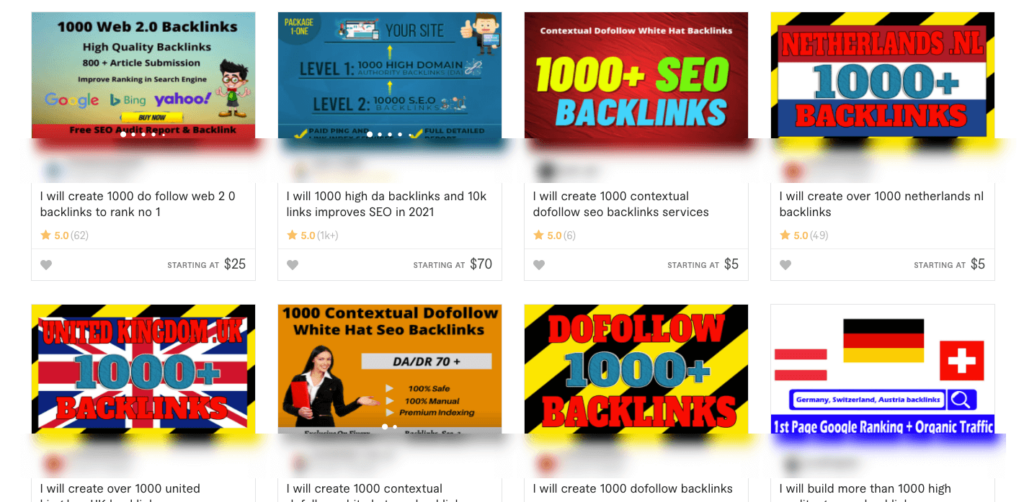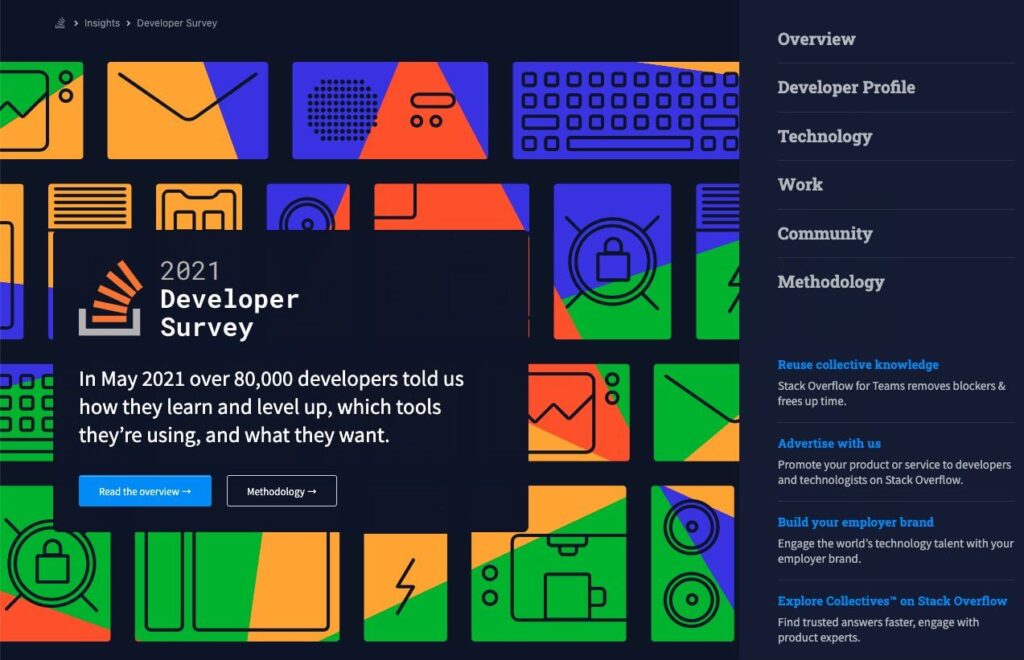Link building is difficult.
There are so many tactics you can try, but what actually works?
And how do you build links when so many people see link building emails as spam?
I’ve run many link building projects in my career, and in this post, I’m not going to talk about “what is link building” or list 30 ways to build links. (But if that’s what you need, I’d recommend reading Ahrefs’ post on link building and Search Engine Journal’s link building guide.)
Instead, I’m going to tell you what works and doesn’t work.
Before diving into what to do, I’ll first share a few common link building tactics that I wouldn’t recommend for most businesses, and explain why that’s the case. Then, I’ll go over the tactics you should do instead. Feel free to jump ahead:
- Link building tactics that don’t work (well) ❌
- Skyscraper technique
- Broken backlink building
- Buying “500 DA 50+ links for $50”
- Link building tactics that work ✅
- Stats compilation
- Data-backed research report
- A free tool
- Guest posting
- Unlinked mentions
- HARO (or similar)
Link building tactics that don’t work (well)
For this section, I chose three tactics that get mentioned a lot but I don’t advocate for them. These don’t work well for most businesses, though I’ll mention situations when it may work.
Skyscraper technique
Backlinko’s Brian Dean first coined the “skyscraper technique” in 2013, talking about a piece of content he wrote on Google ranking factors, and how he was able to get tons of backlinks and significantly increase the traffic to that post.
He noticed that content on Google ranking factors were getting links, so he created a better version of the existing content at the time and did outreach.

Although there’s nothing wrong with this approach, there are 3 reasons why I wouldn’t highly recommend it:
- It’s easy for your competitors to do the same to you.
If they find that you’re (essentially) trying to “1-up” their linkable asset, they can easily do the same to you, creating a vicious cycle. - Content managers are tired of outreach emails about this.
“Hey I really liked your post on X, I wrote a post that’s better than Y’s, can you link to me instead?” isn’t going to convince most people to do you a favor. - The post you want a link from may be old and drive little traffic. If that’s the case, why would they care to go out of their way to switch out a link for you? Doing this isn’t going to help them suddenly get traffic.
There are exceptions though. When doing something like the skyscraper technique, you might have more success when:
- you/your company is well known (e.g. if Facebook asks you for a link, you might do it)
- you outreach has an irresistible offer (i.e. if you link to us, we will do X for you)
- the post you want a link on has decent traffic and is due for an update
- you/your company has existing relations with theirs
Broken backlink building
Also known as “link reclamation”, this backlink building tactic is pretty straightforward:
You open up your SEO tool, export broken backlinks — these can either be to your site or your competitor’s site — then find the contact information for the sites with the broken links. You do an email blast and just hope for the best.
Does broken backlink building work? Yes ✅
Are most people going to ignore your email? Yes ✅
I want to point out some “worst case scenarios” when it comes to this tactic:
- Scenario 1: You send your emails and nobody responds, and feel like you wasted your time. 😕
- Scenario 2: Someone gets your email, feels like the original (broken) backlink wasn’t really necessary, and they decide to rewrite the sentence or paragraph. 😒
- Scenario 3: Someone opens your email and realizes that the post you mentioned doesn’t provide any business value to their company. They decide to redirect or delete the post. 🙄
There are many ways that this tactic will not get you the results you want, so it may not be worth the effort to chase every broken backlink. Again, exceptions exist when:
- the broken link is on one of their top pages or a page that drives a decent amount of traffic
- if the link is to your homepage and you’re doing a big migration to a different domain (for example, in listicle posts, they’d probably update your URL to the right one)
- the post was recently published, so they’re more inclined to fix broken links (h/t to Areej AbuAli for mentioning this in an #SEOFOMO chat)
Buying “500 DA 50+ links for $50”
If you’ve ever managed a website with some traffic, you’ve probably seen emails or even LinkedIn messages asking if you want to buy a bunch of “high DA/DR links” for a low price.
Or maybe you took a look at Fiverr:

First off, I’d stay away because you often don’t know where these links are coming from. Those sites may be low quality, irrelevant, or both. Google might already suspect those sites are not trustworthy, so those links may not benefit your site. Also, who knows, those sketchy sites might even disappear after you paid the bill.
Now, there are mixed opinions about buying links, but as the saying goes:
“If it’s too good to be true, then it probably is.”
Remember that there aren’t really any shortcuts or “easy hacks” to get links — unless maybe you have the budget to purchase a site with a legitimate profile or pay for sponsored content and the links are marked as rel=”sponsored”, per Google’s guidelines.
And speaking of Google’s guidelines, there is a well known section about link schemes, which says that “buying or selling links that pass PageRank” can be “considered a violation of our guidelines”.
In one of my favorite SEO podcasts, Search News You Can Use, Marie Haynes often talks about clients that receive a manual penalty from Google due to their link profile. Did they buy links? Yup.
So is it worth spending a few bucks to get links, and then spend a lot more money to fix it? Nope.
Now that those are out of the way, let’s jump into the tactics that you should do instead.
Link building tactics that work
The rest of the post will go over what to do if you want to build links and why I recommend them. The first three tactics are my favorite ones to work on, although they may require cross-team collaboration. The last three are less resource intensive, but generally good link building tactics to continuously do.
Here are 6 tried-and-true tactics that are worth your time:
- Stats compilation
- Data-backed research report
- A free tool
- Guest posting
- Unlinked mentions
- HARO (or similar)
Stats compilation
This is a type of content where you may target a keywords like:
- [topic] stats
- [topic] statistics
- facts about [topic]
- [topic] quotes
One of my favorite examples is Help Scout’s Customer Service Stats page. According to the Wayback Machine, this page first appeared in 2018. A quick check with Ahrefs shows that this page has driven a ton of links — it’s second to their homepage.
So why does this work, and why would I recommend it?
First off, it’s genuinely helpful and interesting content. If you think about what journalists or content writers tend to link to, they like being able to cite different statistics in their work. This type of content makes their job easier and less time-consuming.
Secondly, you’ll find that there typically is some search volume for these types of keywords. For now, the keyword difficulty is relatively low. You can increase your visibility in this topic/niche and provide value.
This content is quite easy to put together. You just need to take the time to find the relevant statistics. Also, if you have the resources on your team, you can also make it easier for anyone to copy and paste information from your page or share a stat on social media.
Lastly, if you’re able to rank well and people find the page useful, you’ll start getting people to ask if their stat can be included. If you decide to do this, you can ask them to also share your compilation page with their audience. A win-win for both of you!
Data-backed research report
This is when you create an in-depth report that compiles interesting data points. The best ones tend to appeal to a large audience, or they narrow into a very specific audience. Here are two data-backed research reports that I look forward to each year:

By the way, this is one of my favorite link-building techniques and I’ve created a framework for creating link-worthy research reports if you’re interested in creating this type of content.
The basic building blocks of a research report is the data that you use and the story you tell. Data sources may include things like:
- your proprietary data
- survey data with a large sample size (in the thousands, not hundreds)
- a combination of existing data sets (in a way that makes sense)
Most research reports will choose one of the above, but it can possibly be two. For example, in the State of Video Conferencing report for Dialpad, we used the first two data sources and tied them together to write a cohesive story.
The success of these types of reports often depend on the story you tell with the data, and also the timeliness of the report. Here’s why research reports work well:
- It’s data that journalists like to report on. When you do this correctly, you uncover insights that journalists want to cover. Remember that journalists report on what people want to know. If your unique findings can appeal to their audience, it significantly increases the likelihood that they’ll consider mentioning your report.
- Appealing journalists increases your potential for overall visibility. Once you’re top of mind for journalists and they decide to mention your report, your report’s visibility will skyrocket. Content writers are more likely to hear about your content and mention it.
- You position yourself as a thought leader. Increased visibility means the report may eventually reach your target audience. When this happens, they may see you as a thought leader in the space.
Create a free tool
Online calculators are a great example of pages that have the potential to receive a lot of links, when done well. Some examples include mortgage calculators and salary calculators.
Another example is taking a feature of your product and making it free to use. This is what Ahrefs did with their free backlink checker tool, which also has the 2nd highest number of referring domains to their site.
This strategy works well because:
- The tools are indispensable to your target audience. They tend to take a specific pain point or time-consuming task, and make it drastically easier to do. These benefits alone make people want to continually use and share these tools.
- They are an extension of your brand. These tools can help people get more familiar with your product and brand. Perhaps they don’t need your product today, but if they do in the future, it’s more likely they’ll remember you after using your free tool.
- If you create a calculator or similar tool, finding interesting data and edge cases can then be used to pitch to journalists. And if you’re successful in your pitch, they’ll have to link to your tool when writing about it.
This one will require lots of resources though, so make sure to plan accordingly. The next three tactics are less resource-intensive, so I’d recommend doing a mix of tactics and not sticking with only one.
Guest posting
You typically won’t hear SEOs raving about how great guest posting is but it’s still a relevant and commonly used method to get links. By no means is guest posting dead.
Now, most guides on guest posting is usually going to tell you to search for some variation of:
“[topic] + write for us”
“[topic] + guest post”
Nothing wrong with this approach! You can also try to find your competitor’s guest posts and emulate the same strategy as them.
But, let me tell you a secret… 🤫
You certainly can get guest posts on sites that don’t publicly advertise it. I’m not saying you should spam every blog out there though — you definitely should not do this.
When it comes to guest posting, you can guest post where everyone else is guest posting on, or, you can focus your efforts on sharing content on sites that might actually drive relevant traffic to your site.
Which of these two would you choose? Why not do a mix of both?

The steps are simple, but mastering it and scaling it is the hard part:
- Identify which sites are authorities in your niche
- Build a relationship with these sites. Actually read their blog
- Pitch something useful for them
For point number 3, the key here is “useful FOR THEM”. Not for you, for them.
Think less about how you can benefit, and focus more on how to use your team’s expertise to write something valuable for their blog.
This concept is related to a “link building mindset” post that I’m working on. Follow me on Twitter to get notified when it’s live!
When thinking of potential topics to pitch, make sure that:
- they haven’t written about it before
- it’s not too bottom of the funnel for them
- it’s makes sense to naturally mention their product or feature in the post
It only takes a few seconds to do a site search to see if the topic is already covered on their blog. Don’t pitch something they just published otherwise you will not hear back.
Unlinked mentions
This is another tactic that’s pretty straightforward. You can set up alerts of brand mentions, filter out results from your own site, then send outreach emails asking if a link to your site can be included.
Going beyond the basics, you should also:
- “Spice up” your ask. Instead of just asking them to link to you, offer to share the updated post with your audience (assuming it’s relevant to them). This can help increase the likelihood of success.
- Ask for a link to your most relevant page. Depending on what’s the topic of the page that your unlinked mention is on, keep in mind that you may be able to suggest a backlink to a page that isn’t your homepage.
For example, if you have multiple products, you can ask if they’re willing to link to a specific product page since that’ll be more helpful (to their audience) than linking to your homepage. - Automate. Though not required, it can help save time if you see success with this link building tactic. The email outreach portion might be something you can automate with Google Sheets and Zapier.
Keep in mind that the fresher the content, the more likely that you can turn mentions into links.
HARO (or similar)
HARO stands for “Help a Reporter Out”, and it’s a way for both journalists (and content writers) to find sources for content that they’re writing about.
Let’s say I’m writing a post on “birthday cake recipes for dogs”. I might want to include quotes from a veterinarian or someone who owns a dog cake business to provide their expertise in my post. HARO allows me to submit a source request and receive emails from potential sources.
If someone from “site A” provides me with a solid quote, I might link to site A in my post. Although it is not guaranteed that you’ll get a link (or that your quote is accepted), HARO is a great way to build relationships with writers who might be able to link to you in the future.
At the end of the day, link building is a lot about relationship building.
And if you’ve already heard of HARO, make sure to also try tools like Link Sourcery. It’s a freemium tool that’ll allow you to filter HARO requests so that you only see ones that are relevant to your niche, and your inbox will thank you.
To get even more opportunities beyond HARO, I also recommend:
- signing up for Help a B2B Writer
- monitoring #journorequest #prrequest hasthags on Twitter
Best part is, these are all free to use!
Closing thoughts on link building
This is not a comprehensive list of link building tactics, and it’s not meant to be. Instead of providing you with too many options, I wanted to focus on just 6 tactics that can help you get quality backlinks if done well.
No matter what tactic or tactics you choose, remember that the best link building tactics can vary across different industries. Ross Simmonds recommends doing an audit of what works in your niche. From there, you can ideate and iterate on what works for you.
Remember that link building isn’t easy — and it’s not supposed to be. It’s fundamental to how Google works, so don’t neglect it just because it’s difficult.
Lastly, keep in mind that like many things in life, there are no guarantees when it comes to link building. Do your research, give it your best shot, and let me know how it goes!
